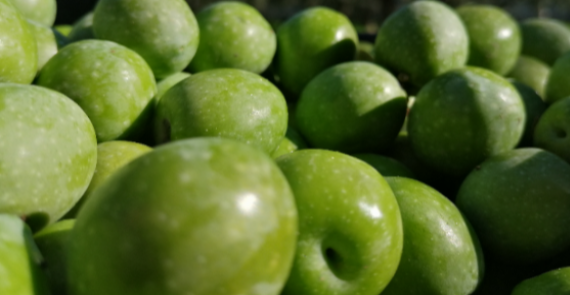The Factory
Our olive oil
The processing system that leads from the olives to our oil is essential, in fact a proper processing in the mill affects 80% of the goodness of the final result. A poor working process, or carried out with oxidized equipment, would significantly ruin the work conducted in the olive grove and the effort of the devices used in the prompt transport of drupes.
With this awareness comes our activity of producing an oil made according to ancient and natural working processes. It is obtained from a process without chemical manipulation and in conditions particularly thermal, that is without that are produced alterations due to the temperature of processing, its taste preserves the flavor of the olives with which it comes to be obtained and has a maximum acidity, expressed in oleic acid, 0.15%.
It has a density of medium value. In it we can observe the main sensory attributes peculiar to the cultivar, Nocellara del Belice, which has distinguished itself in the world for the high intensity of its pleasant fruitiness of olives and other fruits and vegetables, for its intense but balanced bitter and spicy flavor and for the presence, to the taste, of evident and pleasant sensations of "dried fruit", "ripe fruit", "unripe vegetables" and "ripe vegetables" mixed harmoniously.
Its color is green with golden yellow reflections and its taste is incomparable and valuable to the palate. Its use is suitable for the finishing of great dishes, in fact it exalts any kind of dish.
The color and fragrance, which distinguish it, bring to the table the scent of the fields, the flavor and authenticity of our uncontaminated nature.
Oil extraction with cold processing system
The quality of EULIVO' extra virgin olive oil is built in the field, it is maintained in the mill with a continuous cycle milling and it is consolidated with a correct conservation.

Olive growing in the Belice Valley is represented by the varieties: Nocellara del Belice and Giarraffa. The area invested in the cultivation of olive trees exceeds 10 million hectares with about 1.8 million olive trees. It takes place from September to October, when the olives are in full maturity.

Harvesting is done strictly by hand. The best preservation of the olives is obtained with plastic boxes with large windows. The olives are poured into the thermoia and through the vibrating plane of the defoliator are sucked dust, twigs and leaves.

The defoliated olives are subjected to washing to remove residues of soil and various impurities. The olives are selected by "caliber", they are divided into two groups, the smaller ones will be used for oil, the larger ones are processed according to market demands, to become table olives.

The washed olives are sent to the crusher for the milling phase and thanks to a system composed of hammers and mobile knives, the olive paste is obtained. Phase in which the olive paste enters a steel tank, will be mixed gently and slowly to break the emulsion of water / oil, while keeping under control the temperature that should never exceed 20 ° C.

The olive paste undergoes centrifugation by means of a decanter which separates the liquid phase, consisting of vegetation water and oil, from the solid phase, called pomace. The must, oil water, will be separated in a final centrifuge and thus obtain EXTRA-VIRGIN OLIVE OIL.

Moreover, samples are taken and analyzed in the laboratory. Then the olives are bottled only shortly before sale in order to preserve all the olfactory and gustatory characteristics. While table olives are preserved in brine in special containers.








